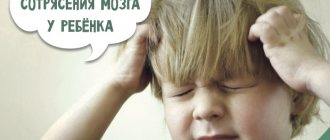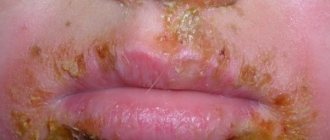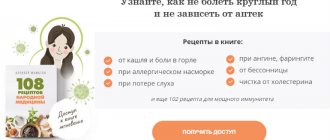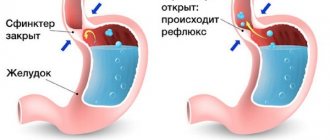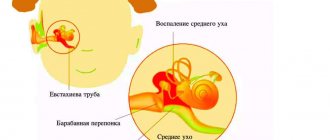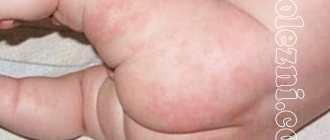Worms can appear in children at any age. Both children under one year old and adolescents are susceptible to infection, regardless of their social status and organization. The severity of the invasion is directly affected by the life cycle of the pathogen, which in turn is associated with the structure of the worms.
It is possible to see adult parasites in feces only with a few types of intestinal helminthiasis, but in order to imagine all the harm caused to a fragile organism, it is necessary to become familiar with the external features of all types of childhood parasites.
What to do in such a situation? To get started, we recommend reading this article. This article describes in detail methods of controlling parasites. We also recommend that you consult a specialist. Read the article >>>
Roundworms or nematodes
The most common group of helminths in young children, which causes various types of nematodes.
A feature of roundworms is the complete absence of the respiratory and circulatory systems. They absorb oxygen throughout their entire body.
The sizes of worms vary from small to medium worms, and the habitat of individuals is various parts of the intestine. Pinworm is the causative agent of enterobiasis, which is often diagnosed in children under one year of age.
Pinworms
These are one of the most common helminths in infants. They can be seen in a child's potty with the naked eye.
- The size of females reaches 12 mm, and males 5 mm. Their body shape is similar to a spindle.
- In females the tip is pointed, in males it is twisted into a ring.
- At the top, the body is slightly expanded and equipped with a vesicle (mouth), with which the pinworm is attached to the intestinal wall. The oral cavity gradually passes into the region of the esophagus, followed by the intestines and genital opening.
Pinworms have a special life cycle, in which females die after laying eggs, and males die after mating. Therefore, you can often see large numbers of these parasites in a baby’s stool. They look like scraps of white threads.
Many parents say they have seen similar black worms in their stool. But parasites do not have such colors. Most often, particles of undigested fiber from food are mistaken for worms.
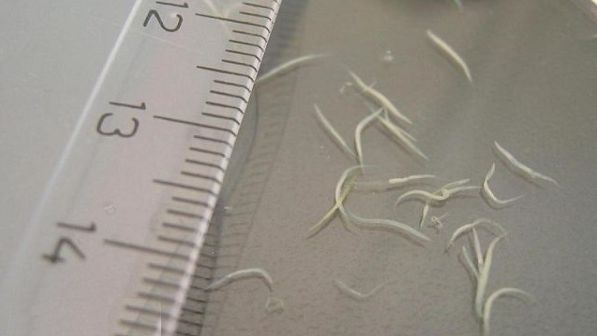
Prevention
Observe the following rules:
- Keep your child's hands clean;
- wash fruits and vegetables thoroughly;
- heat-treat meat and fish products;
- If you have constant contact with animals, use antihelminthic drugs in a prophylactic dosage.
Many people are interested in the question of what worm eggs look like, because cases of infection with parasites are not uncommon. Infestation usually occurs through the entry of worm eggs into the human body. This can happen through dirty hands, food, and contact with feces and pet hair. If a parasite infection is suspected, a person tries to detect worm eggs in the stool on their own. But it is impossible to see the eggs with the naked eye; they are microscopic in size and can only be detected when analyzing stool.
Types of worms in a child, photo
The most common parasites in our climate zone are:
- Nematodes : ascariasis, enterobiasis, trichuriasis, trichinosis, ankylostomiasis
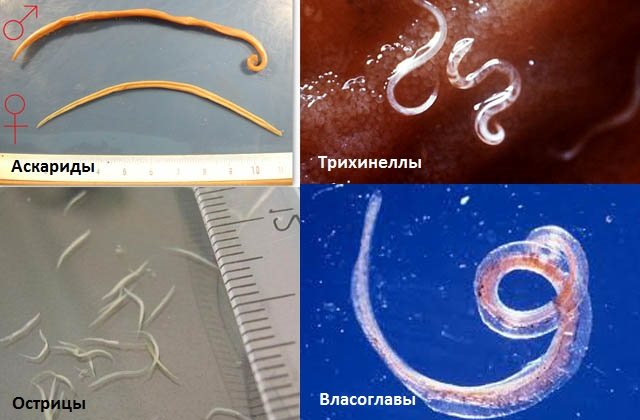
Roundworms (nematodes)
- Cestodoses : hymenolepiasis, taeniasis, teniarinchiasis, diphyllobothriasis, echinococcosis.
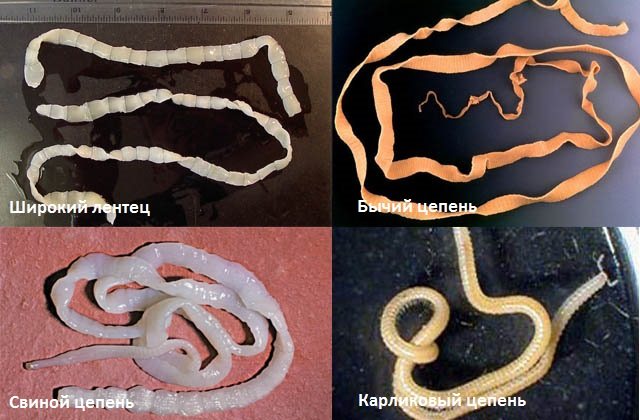
Tapeworms (cestodes)
- Trematodes
: opisthorchiasis, fascioliasis
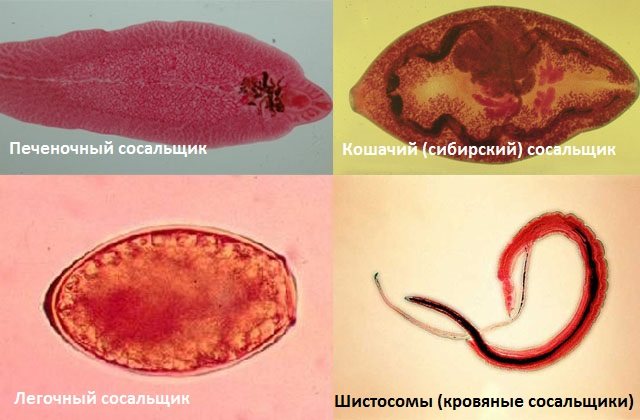
How to get your child tested for worms?
It is worth noting that stool analysis is considered the most common. To do this, you need to take the first portion of feces per day into a sterile container. The biomaterial must be delivered to the laboratory within 2 hours. This is a simple type of analysis; similar studies are carried out in any district clinic. A referral can be taken from a pediatrician.
Common ways to get tested for worms:
- Blood. This type of analysis is the most accurate; in 95% of cases it gives reliable results. It can be used to determine helminthiasis, even if there are no obvious signs and symptoms of infection.
- Scraping You can carry out the fence using tape or a cotton swab. It is necessary in the morning after waking up to rub a cotton swab around the anus. You can apply the tape to the baby's anus with the sticky side. This piece of tape is placed in a sterile container. There is no need to wash your child’s bottom before taking a test.
Making a diagnosis of helminthiasis
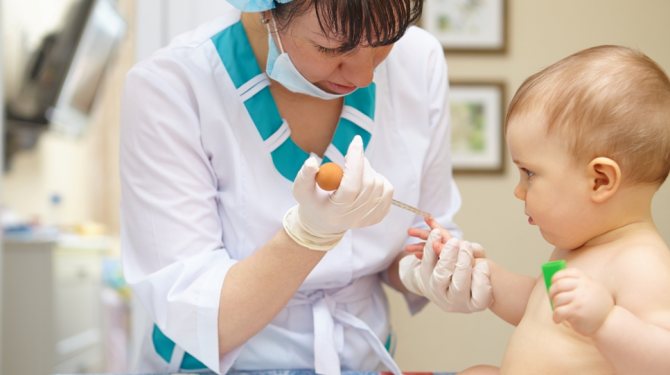
Making a diagnosis of helminthiasis
A general assessment of the symptoms manifested in a child is an indirect method for diagnosing helminthic infestation. Although, an experienced doctor can determine the presence of worms in a child even without laboratory tests, by assessing the list of symptoms.
You can determine the presence of worms in children in the following ways:
- Directly see them in the pot with the child’s feces;
- Take a specific blood test for worms;
- Perform an analysis of duodenal fluid;
- Give a swab taken from the child’s anus;
- Submit a stool test to a laboratory to identify worm eggs under a microscope.
If worms were not found in the child’s stool, but symptoms characteristic of helminthic infestation are present, it is necessary to be tested for worms. The most effective method for identifying helminthiasis in a child is to analyze his stool for worm eggs.
In addition, the specialist can pay attention to the following indicators of the child’s body:
- Condition of the lymph nodes. Helminthic infestation is usually accompanied by their increase.
- Enlargement of internal organs, most often the liver and pancreas. Determined by ultrasound.
- The level of hemoglobin and red blood cells in the child’s blood. Helminthiasis is often accompanied by anemia.
- An increase in the level of leukocytes in the blood (indicates the presence of inflammation in the body).
- Liver tests. Symptoms of helminthic infestation are abnormal levels of bilirubin, immunoglobulin E, and eosinophils.
How to take a stool test for worm eggs
Stool collection for analysis
If parents suspect that their child has pinworms or other intestinal parasites, for an accurate diagnosis it is necessary to analyze the child's stool for worm eggs. To do this, you need to purchase a special container for stool collection from the pharmacy. It consists of a plastic box with a lid. Usually a plastic spoon is also included in the kit. Next, a small part of the child’s stool should be placed into this container using a spoon and the lid should be screwed on tightly, and then the container should be delivered to the laboratory.
If it is not possible to purchase special laboratory glassware for collecting stool, you can use a matchbox or glass flask.
Smear on pinworm eggs
Enterobiasis is also diagnosed by analyzing the contents of the folds near the child's anus. For correct indicators, it is advisable not to visit the toilet and not wash yourself for about 12 hours. Thus, it is optimal to take a smear for worm eggs in the morning.
Symptoms
Not all helminths cause obvious clinical signs of disease in children. There are such individuals that stay in the human body for years and do not make themselves known. The impetus for their development is a decrease in the host’s immune defense. Thirty years ago, a theory arose among scientists that it was parasites that provoke serious somatic pathologies of internal systems and organs, including cancer processes. And to this day this opinion does not lose its relevance.
Almost each of us, and even a child, becomes an unwitting carrier of infections of various origins - bacterial, viral, fungal and parasitic. Worms and protozoa live in the human body at its expense, feeding on products entering the digestive tract, as well as blood and epithelial cells. At the same time, helminths secrete toxins and poisons that clog the body and provoke unpleasant symptoms in the form of low-grade fever, weakness and other health problems.
Since there are many types of parasites, experts have identified a list of common clinical symptoms indicating the presence of invasion in the body. Let's look at them in more detail:
- changes in appetite both upward and downward, drooling, nausea, weight loss;
- allergic reactions of various forms;
- headaches, weakness, bowel disorders such as constipation and diarrhea, periodic discomfort in the right hypochondrium;
- brittle nails and hair, deterioration in the appearance of the skin caused by a chronic lack of vitamin B12;
- frequent infectious and inflammatory pathologies of the nasopharynx and intimate area.
Since helminthiasis causes a colossal amount of toxic compounds to enter the human blood, the child’s nervous system is seriously affected. This aspect manifests itself in the form of increased irritability, uncontrollable outbursts of aggression, sleep disorders, problems with perseverance and concentration. All of the above points are also in addition to the symptoms of helminthic infestations.
Take a test for worms
Helminthiasis in infants: features of the disease
As a rule, parasites are detected in preschool children, starting from two years of age. In infants, this situation is rare, although such cases cannot be completely excluded. A baby becomes infected with parasites from about six months, when his diet includes the first complementary foods, potentially dangerous from the point of view of pathogenic microflora and helminths, or he begins to explore the world around him.
Infection in such a child is much more difficult to diagnose. Symptoms of the disease in a baby are the following, which are often confused with manifestations of other pathological processes:
- anxiety and poor sleep;
- hyperemia and swelling in the anus, and in girls near the external genitalia;
- digestive disorders: tendency to hold stool or, on the contrary, diarrhea, vomiting, abdominal cramps;
- weight loss, lack of appetite;
- pale and dry skin, blue under the eyes;
- allergic rashes on any part of the body, most often in the legs;
- low-grade fever of unknown origin;
- intermittent cough not related to respiratory infections.
All of the listed signs of helminthiasis in a child indicate various disorders. To confirm the diagnosis, it is necessary to submit the baby’s stool for an appropriate analysis.
It is much more difficult to cure the disease in infants than in older children. The fact is that most anthelmintic drugs are contraindicated for up to two years, and they also have serious side effects. For a fragile organism, such experiments can result in disastrous consequences. But what to do if a baby has a confirmed helminthic infestation?

Secondly, a parasitologist can actually prescribe drug therapy if the disease directly threatens the health of a small child. Deterioration of immune defense, general intoxication of the body and dysfunctional digestive disorders will not result in anything good for a growing baby, except for serious health problems. Sometimes helminthiasis threatens the life of an infant if parasites in large numbers affect internal organs and systems.
Traditional medicine cannot and should not be used in the treatment of infants under one year of age. This is due to the fact that despite the external harmlessness, all medicinal plants are highly toxic and can cause a toxic effect on the child’s body. It is also almost impossible to choose the dosage for the baby, so such treatment can cause more harm than good.
Symptoms of infection

The manifestation of the disease at the initial stage of infection is practically imperceptible, therefore, it is almost impossible to determine the presence of worms, except as a result of analysis in a medical institution. Therefore, it is very important to detect these parasites in time. While their number is small, their vital activity does not negatively affect the functioning of the child’s body. But if parents constantly monitor the psychophysical state of the child, then they may suspect at an early stage that something is wrong with the child’s body.
How do you know if your child has worms? To do this, you should pay attention to some signs. For example:
- Itching appears in the child's anal area, which the child may constantly complain about to his parents.
- The child does not show his former activity and behaves passively, while his skin color changes to pale.
- The child complains of general weakness and constant fatigue.
- The child has a poor appetite.
- The child develops a cough for no apparent reason.
- Frequent constipation or diarrhea is possible as a result of poisoning of the body.
- Excessive salivation associated with the gag reflex.
- Dark circles appear under the eyes, indicating that the child is tired.
- There may be redness in the anal area.
- A child may grind their teeth in their sleep.
- Girls may experience vulvovaginitis.
- Constant complaints of burning and itching in the anus.
- Complaints of stomach pain without good reason.
- In the stool you can see worm eggs, as well as live parasites.
In addition to the above symptoms, allergic reactions of unknown origin are possible, which can lead to serious consequences.
Worms – School of Dr. Komarovsky
Treatment of worms in children
Before selecting treatment, the pediatrician must diagnose the disease and determine what type of helminth is present in a particular case. To do this, it is recommended to test stool for eggs/larvae of worms more than once, but for 3 days in a row. Based on the data obtained, a set of indirect symptoms and the exclusion of other pathologies that cause a similar clinical picture, the child, and sometimes all family members, are prescribed anthelmintic therapy in order to avoid the formation of a focus of infection.
It means:
- preparation for the removal of parasites;
- treatment directly aimed at eliminating helminths;
- elimination of painful symptoms;
- restoration of the functioning of the immune system, gastrointestinal tract and other organs whose function has been impaired by worms.
As preparatory means, parasitologists, infectious disease specialists, pediatricians and other specialists who help cure helminthic infestations use vegetable oils such as flaxseed and pumpkin. They quickly bind all toxic substances that were formed as a result of the vital activity of helminths and remove them from the body. Enterosgel can be prescribed from pharmaceutical sorbents. It is harmless and non-toxic, and therefore is freely given to children even from the first month of life.
For the treatment of worms, drugs are selected taking into account the pathogen. Most often these are broad-spectrum medications. Eg:
- Decaris - tablets that cause paralysis of the muscles of roundworms, pinworms, whipworms and about 5 other types of helminths; The children's release form has a pleasant apricot smell and light orange color, which “interests” the child in taking the medicine.
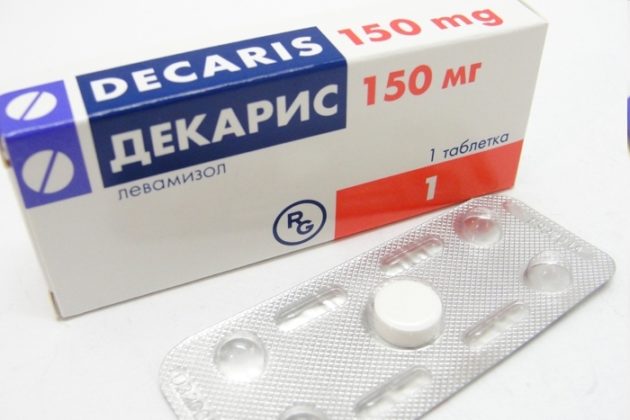
- Pyrantel is a drug for the treatment of enterobiasis, trichuriasis, ascariasis, necatoriasis (caused by the necator worm) and hookworm disease (hookworms); effectiveness is achieved through neuromuscular blockade of parasites; Children are usually prescribed in the form of a cloudy yellow suspension.
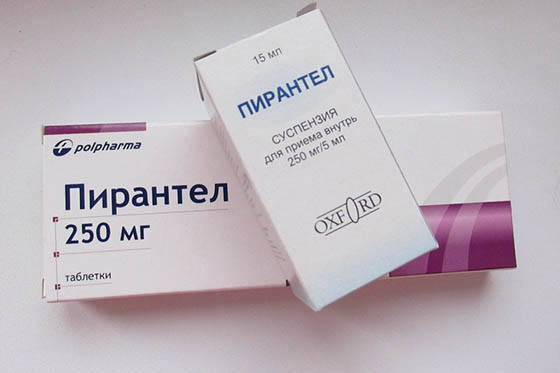
- Vermox is a white or beige tablet product that is used for the treatment and prevention of infection by pinworms, roundworms and other ill-wishers; it is also often prescribed for mixed helminthiasis; It has a detrimental effect on worms by depleting the glycogen supply in their tissues.
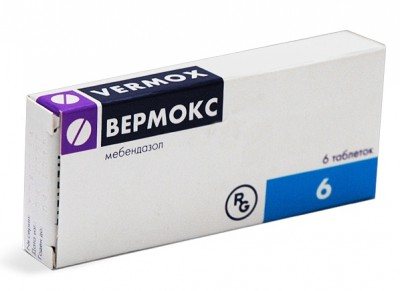
Since symptoms and treatment are inseparable concepts in medicine, therapy is required to combat individual manifestations of the disease. For example, he may be prescribed antihistamines (Suprastin, Diazolin), mucolytics and bronchodilators (Bromhexine, Ambrobene, Mucaltin), antispasmodics (Papaverine), iron supplements (Irovit, Venofer - for anemia).
Medicines designed to maintain and restore natural microflora (Bifiform, Linex) will help treat gastrointestinal dysfunction caused by worms.
Milk thistle products (Geparsil, Darsil) will help normalize liver function. In order to increase immunity, children are prescribed multivitamin complexes (Alphabet, Vitrum Baby) and immunostimulants (Immunal, Transfer Factor Kids).
Surgical treatment is used extremely rarely, only in the following cases:
- prolonged spasm of the small intestine due to the presence of dead roundworm in it;
- blockage of the child’s bile ducts by worms;
- perforation of the intestinal wall by helminths; acute appendicitis caused by parasites clogging the appendix.
Folk remedies and recipes for worms
To treat helminthiases, people have long used a wide variety of folk methods, sometimes very exotic - spells, dancing with a tambourine at the patient’s bedside, dragging it over a fire, luring a worm into milk and others. It looks more like shamanism. But you shouldn’t give up traditional medicine. The antihelminthic properties of many plants are well known - onions, garlic, pumpkin and pumpkin seeds, walnuts, pomegranates, St. John's wort, wormwood, tansy, thyme, and male fern. However, only a doctor - a gastroenterologist, infectious disease specialist or parasitologist - can identify the type of helminth. In addition, for treatment to be effective, it is necessary not only to destroy the parasites, but also to neutralize the consequences of their activity - allergization, anemia, biliary dyskinesia, etc.
Modern medicine has sufficient capabilities to treat helminthic infestations at all stages of worm parasitism. And of course, the sooner treatment is started, the better. The arsenal of remedies for the treatment of helminth infections is quite wide: these include medications, herbal medicine, homeopathic remedies, and ozone therapy.
Depending on the selective effect on helminths, all drugs are divided into groups. Some of them enhance intestinal motility, due to which the effect is achieved - the helminth is removed from the intestine and can be identified. Other drugs kill parasites by damaging their cell membranes, disrupting carbohydrate metabolism, inhibiting aerobic respiration, causing muscle paralysis and preventing the development of eggs. One of the main requirements in the treatment of helminth infections is the use of laxatives some time after taking anthelmintic drugs. This is necessary so that paralyzed and dead individuals are removed from the intestines. Typically, saline laxatives (magnesium sulfate) are used, as well as herbal laxatives containing antiglycosides (senna, joster). Castor oil should not be used for helminthiasis! The criterion for recovery is negative results of stool tests for worm eggs obtained after treatment.
Traditional medicine offers many ways to expel worms. But in order for the treatment to be more effective, it is advisable to know which type of parasite has settled in your body, since different remedies act on them differently. To do this, you need to consult a doctor and undergo an examination. It should also be borne in mind that anthelmintic treatment is contraindicated during menstruation, pregnancy, feverish conditions and intestinal diseases.
For pinworms - Boil a large head of garlic in a glass of milk until soft. Strain the milk, cool and do an enema with it, leaving it overnight. An adult needs a whole glass for an enema; a child needs 1/4-1/2 glass. Such enemas should be done within a week. - 1 tbsp. pour a spoonful of tansy flowers into 0.5 liters of boiling water, boil for 10-15 minutes, strain. Administer as an enema once a day (hold for 5 minutes). The product is suitable only for adults. — 1 hour Pour a spoonful of wormwood into 2 cups of boiling water. Cool, strain. Take 1-2 tbsp. spoons 3 times a day 20 minutes before meals
For roundworms - 3 tbsp. Pour a glass of boiling water over spoons of tansy flowers and leaves, leave for an hour, strain. Take 1 tbsp. spoon 3-4 times a day. - 1 tbsp. mix a spoonful of crushed wormwood seed with honey and eat it between meals (it is better to eat very little that day), and then take a laxative.
For tapeworms - Eat raw, peeled pumpkin seeds (always with thin green skin) in unlimited quantities for 10-14 days. - Eat on an empty stomach about 100 g of raw, peeled pumpkin seeds with green skin, and an hour later drink in small sips a glass of milk in which the head of garlic has been boiled. After half an hour, drink a strong laxative, and after another 1.5-2 hours, do an enema with warm water, in which you also first boil the head of garlic. - Mix tansy flowers, wormwood herb, and chamomile flowers in equal parts. 2 tbsp. spoons of this mixture pour 0.5 liters of boiling water into a thermos, then strain. Drink a glass on an empty stomach in the morning and evening for 3-5 days. - Grind 3 tbsp. spoons of unripe walnuts, pour a glass of lightly salted boiling water over them, let it brew for half an hour, then strain the cake. Drink the resulting liquid throughout the day, taking a salty laxative (Carlvar or Glauber's salt). Effective against both tapeworms and roundworms.
The anthelmintic effect of herbs is still of some interest today, especially if treatment with anthelmintic drugs is contraindicated. Birch, immortelle, elecampane, valerian, oregano, eucalyptus, centaury, mistletoe, walnut, tansy, St. John's wort, garlic, etc. have anthelmintic action. You can use the following collection: valerian root - 2 parts, elecampane root - 2 parts, fruits jostera – 2 hours, birch buds – 2 hours, St. John’s wort herb – 5 hours, centaury herb – 4 hours, mistletoe herb – 3 hours, wormwood grass – 2 hours, hop fruits – 3 hours, tansy inflorescences – 5 hours. Pour two tablespoons of the collection into 0.5 liters of boiling water in a thermos, apply 1 tbsp. 4 times/day 30 minutes before meals.
In folk medicine, when infected with worms, enemas with garlic are also used. 5-6 cloves of garlic are poured into 100-150 ml of water and brought to a boil. The warm decoction is used for enema. The procedure is repeated every day for 1 week. After 2 weeks, this course is repeated. All antiparasitic measures must be combined with enemas. After all, helminths, dying, decompose and poison the body with toxins. And it is in vain that opponents of the use of an enema talk about the unnaturalness of this procedure, in which the normal microflora is supposedly washed away - there cannot be normal microflora in an body inhabited by worms.
The most effective anthelmintic enema is the following. Grind 3 cloves of garlic and the same volume of onion. Pour warm boiled water for 10-15 minutes, strain and squeeze through cheesecloth. Add the resulting infusion to 1.5-2 liters of warm (36-39°C) boiled water prepared for washing. Add 1 tbsp. freshly squeezed lemon juice. The solution is administered after a natural bowel movement or after a cleansing enema. Several of these procedures will kill small worms such as pinworms or roundworms.
Treatment with folk remedies
With the help of folk remedies you cannot completely get rid of parasites, but you can speed up the treatment process and boost your immunity. There are several recipes that are extremely useful for worms.
- Pumpkin seeds. Pumpkin seeds have a negative effect on worms and promote their release, while improving digestion. A few hours before breakfast on an empty stomach you need to eat a small handful of seeds - this should be done every day until complete healing.
- Garlic. Garlic essential oils have a detrimental effect on parasites, so it is recommended to eat it in case of helminthic infestations. It is enough to eat a few cloves with a bite of black bread before breakfast to notice the positive effect.
The best effect can be achieved by combining folk remedies and medications. It is also important to follow all the rules of personal hygiene, otherwise the disease will recur. In general, the prognosis for pinworms and roundworms is favorable: with proper treatment, these parasites go away fairly quickly.
It is possible to defeat parasites!
Antiparasitic Complex® - Reliable and safe removal of parasites in 21 days!
- The composition includes only natural ingredients;
- Does not cause side effects;
- Absolutely safe;
- Protects the liver, heart, lungs, stomach, skin from parasites;
- Removes waste products of parasites from the body.
- Effectively destroys most types of helminths in 21 days.
There is now a preferential program for free packaging. Read expert opinion.
Interesting to know:
Causes of worm infection

Causes of worm infection
The causes of helminth infection depend on the type of parasite.
- Pinworms most often enter a child’s body through the oral-fecal route;
- Infection with trichuriasis usually occurs due to the consumption of improperly prepared food;
- Diphyllobothriasis most often occurs when consuming insufficiently thermally processed river fish;
- Roundworms, like pinworms, most often enter a child’s body through the oral-fecal route;
- The causative agent of trichinosis lives in animal meat, most often in pork and beef;
- The lanceolate fluke and other trematodes usually have an intermediate host; human infection occurs through contact with infected animals or with plants that contain feces of sick animals.
Bibliography
- Centers for Disease Control and Prevention. Brucellosis. Parasites. Link
- Corbel MJ Parasitic diseases // World Health Organization. Link
- Young EJ Best matches for intestinal parasites // Clinical Infectious Diseases. — 1995. Vol. 21. - P. 283-290. Link
- Yushchuk N.D., Vengerov Yu.A. Infectious diseases: textbook. — 2nd edition. - M.: Medicine, 2003. - 544 p.
- Prevalence of parasitic diseases among the population, 2009 / Kokolova L. M., Reshetnikov A. D., Platonov T. A., Verkhovtseva L. A.
- Helminths of domestic carnivores of the Voronezh region, 2011 / Nikulin P. I., Romashov B. V.
An article for patients with a doctor-diagnosed disease. Does not replace a doctor's appointment and cannot be used for self-diagnosis.

The best stories from our readers
Topic: Parasites are to blame for all troubles!
From: Lyudmila S. ( [email protected] )
To: Administration Noparasites.ru
Not long ago my health condition worsened. I began to feel constant fatigue, headaches, laziness and some kind of endless apathy appeared. Problems also appeared with the gastrointestinal tract: bloating, diarrhea, pain and bad breath.
I thought it was because of the hard work and hoped that it would go away on its own. But every day I felt worse. The doctors couldn’t really say anything either. Everything seems to be normal, but I feel like my body is not healthy.
I decided to go to a private clinic. Here I was advised, in addition to general tests, to get tested for parasites. So in one of the tests they found parasites in me. According to doctors, these were worms, which 90% of people have and almost everyone is infected, to a greater or lesser extent.
I was prescribed a course of antiparasitic medications. But it didn’t give me any results. A week later, a friend sent me a link to an article where some parasitologist shared real tips on fighting parasites. This article literally saved my life. I followed all the advice that was there and after a couple of days I felt much better!
Digestion improved, headaches went away and the vital energy that I so lacked appeared. To be sure, I took the tests again and no parasites were found!
Anyone who wants to cleanse their body of parasites, no matter what types of these creatures live in you, read this article, I’m 100% sure it will help you! Go to article>>>
Still have questions? Ask them in our Anonymous group on VK
How to get rid of parasites in a week. The answer is here!
A reliable and effective remedy for combating worms. Removes all parasites in 21 days.
Go to website
Reviews
Read online
Symptoms that 100% indicate parasites! Take the Test.
How to rid your body of life-threatening parasites before it’s too late!
Read more
Website
To get a consultation
The doctor tells how to quickly get rid of parasites for adults and children!
A parasitologist explains what effective methods exist to combat helminths.
More details
Read completely
Comments
Search for cures for parasites
Other tests
We recommend reading
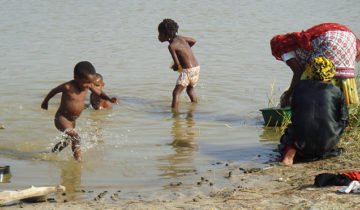
Intestinal schistosomiasis: who is the causative agent, symptoms, diagnosis and treatment
23 hours ago 08.10.202008.10.2020ecoliv94
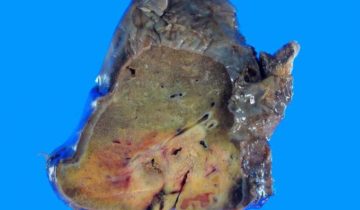
Paragonimiasis: pathogen, diagnosis, symptoms, treatment and prevention
1 week ago 01.10.202001.10.2020ecoliv94

Opisthorchiasis in children: symptoms and methods of treating the disease in a child
1 week ago 01.10.202001.10.2020ecoliv94
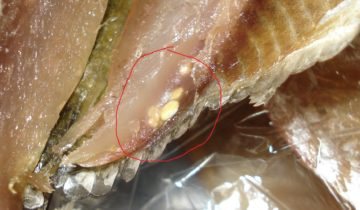
Opisthorchiasis in fish: which species are most often affected (list), symptoms and how not to get infected
1 week ago 01.10.202001.10.2020ecoliv94

